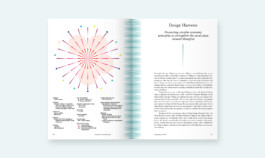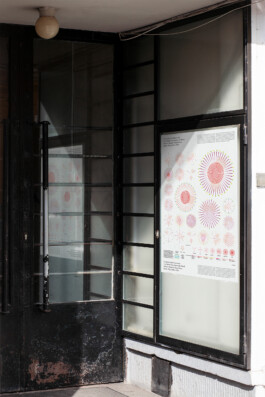Design for Social Innovation:
Case Studies from Around the World
New book examines the levers propelling the field of design for social innovation into a new phase of growth and sustainability
Editors Mariana Amatullo, Bryan Boyer, Jennifer May, and Andrew Shea are the team behind the award-winning LEAP Dialogues: Career Pathways in Design for Social Innovation and the open source LEAP Dialogues: The Educator’s Guide. Their new book, Design For Social Innovation: Case Studies from Around the World postulates that the field of design for social innovation (DSI) is at a pivotal moment where it’s essential to move the conversation beyond attempts to explain or justify the role of design in the field. To that end, the emphasis of this work is to examine and underscore how the field can grow, evolve, and crucially, become a more sustainable practice.

Grounded by a worldwide survey in sectors as diverse as public health, urban planning, economic development, education, humanitarian response, cultural heritage, and civil rights, Design For Social Innovation: Case Studies from Around the World captures these stories and more through 45 richly illustrated case studies from six continents.
Rather than presenting a singular definition of “design for social innovation,” the book celebrates the many heterogeneous and dynamic forms of how designers engage critical challenges in their communities, cultures, and countries. With this commitment towards pluralism, case studies were selected to include diverse geographies, showcase different funding and organizational models, and a broad spectrum of design disciplines, social issues, and design outputs. The focus was on the evidence of impact, instead of scale. Cases were gathered through a bottom-up approach, leveraging social media and the expertise of an international editorial advisory board.


From the work presented in the case studies, the editorial team pulled out seven emerging themes that provide the spine for the book’s seven sections: Geographies of power, Trajectories of International development, Organizing the work, Navigating partnerships, Mediums of change, Measuring impact, and Positioning for growth. In turn, these themes are anchored by a dynamic set of reflections in roundtable discussions between leading practitioners and educators who amplify the case studies with insights from their scholarship and/or lived experiences and practices.
Piecing together learnings from across the globe, the book addresses critical and practicable questions. What are the business models behind social innovation projects? Who are the organizations investing in the field? What evidence do we have of impact by design? How is this work similar or different around the world? It presents a truly global overview of the cultural, economic, and organizational levers propelling design for social innovation forward today.



Accompanying each case study is a page of data describing the who, what, and how of the project. This has been visualized in a unique ‘flower diagram’ using data about team, funding, and outputs of the project.


Design For Social Innovation: Case Studies from Around the World is a must-have for professionals, organizations, and educators in design, philanthropy, social innovation, and entrepreneurship. As the editors contend in the introduction, “With countless pilot projects, startups, and Labs that have come and gone, the question is how the sustainability of design for social innovation practices can be enhanced. If that’s something you care about, this book is for you.”
For more information on the content and stories in this book, visit www.dsibook.com.
More Projects:

























